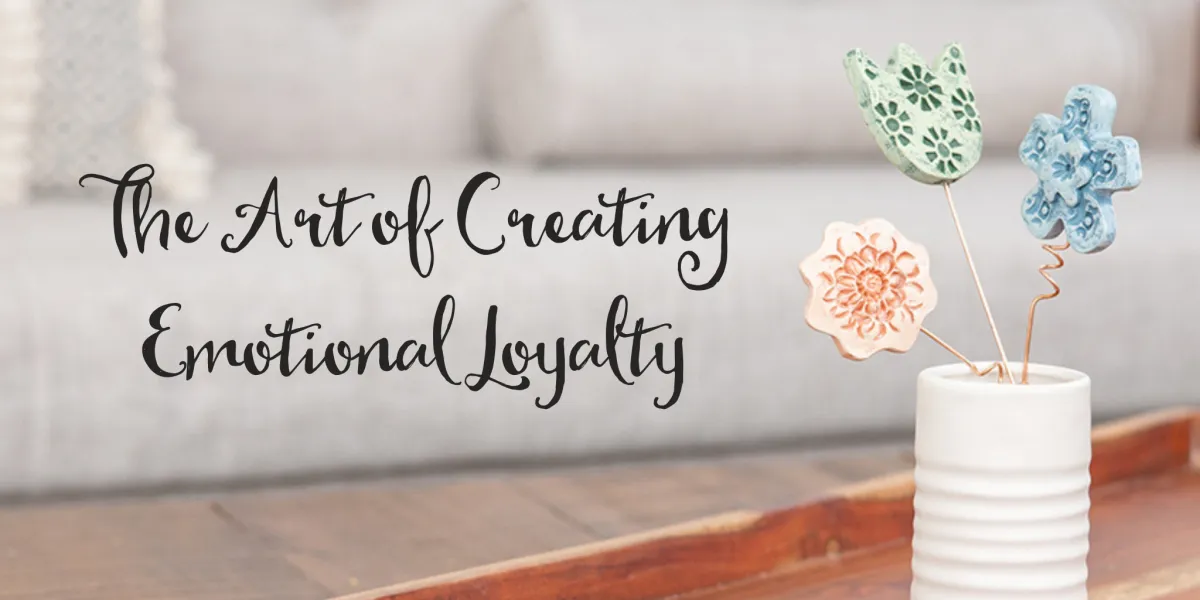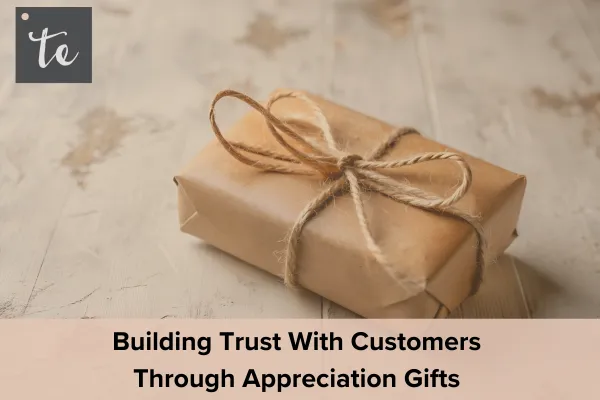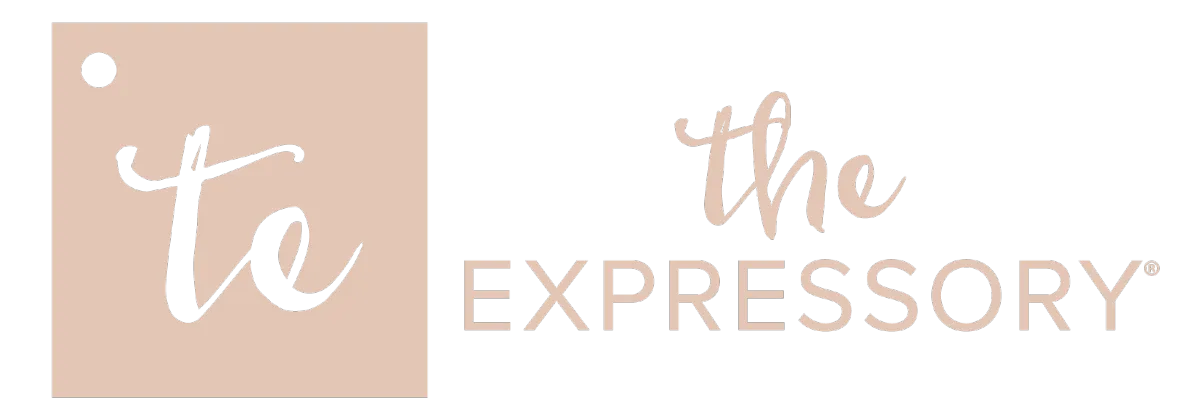
What Swimming Teaches Us About Team Relationships
In my latest video, I break down how swimming teaches us the importance of these relationship-building efforts and the specifics of what we as leaders need to nurture with our teams.
Holiday Gift Insights - What Everyone Else Is Doing
In an effort to simplify the decision-making process, we're sharing some of the trends we've seen with gifting over the years. We're even sharing our best seller and why that gift had such success.
What Makes A Successful Holiday Gift? The Travel Bag Edition
Last year we had the opportunity to work with one of our clients in the travel and tourism space to design an experience that delivered their highest engagement yet.

Building Trust With Customers Through Appreciation Gifts
The holiday season is fast approaching. If you're like most service providers, your mental checklist is starting to form: who to send gifts to, what the budget will be and what the swag or basket will look like. Historically, these are gestures of gratitude. Tokens to remind clients, partners and vendors that you value the relationship.
But here’s a twist. What if your holiday appreciation could also be a strategic lever used not just for clients, but for prospects and new partners to build trust?
That’s exactly what this recent podcast episode from Predictive ROI triggered for us to consider. In “Why Distrust Is Rising and What Agencies Can Do About It,” Hannah Roth draws on data from our own Strategic Engagement Index and other trend signals to share: trust today is as important as your service or product itself.
Let’s walk through how that insight becomes a powerful lens for how to make the most of your holiday appreciation efforts this year.
What the Podcast Shares About Trust
Here are a few of the key ideas Hannah shares in that episode and how they connect with what we’ve experienced in our work in designing strategic touchpoints:
1. Trust isn’t a Bonus. It’s a barrier or a bridge
In the episode, Hannah calls out one of the most overlooked challenges in today’s business development. You’re not starting from zero when it comes to trust. You’re starting from negative trust. Because of poor past experiences, and an overall divisive environment these days, clients now expect to be let down in general. So your job isn’t just to build trust, it’s to overcome distrust.
That insight aligns with what we saw in our Strategic Engagement Index research: even companies with great offers often struggle to convert — not because of the offer itself, but because the relational signals (care, consistency and reciprocity) weren’t strong enough to make someone feel safe engaging. It’s not as easy to win over our prospects anymore.
2. Most teams don’t strategize for trust
In the podcast, she mentions that 66% of agency leaders say they lack a strategy for trust-building.
That aligns with a problem we see regularly: many organizations treat relational engagement as ad hoc, not systematic.
Our Strategic Engagement Index encourages mapping relational touchpoints proactively and not just waiting for “moments” to occur.
3. Outcomes over gestures
Hannah stresses that people don’t want more stuff. They want something that lets them know they are understood, relevant and worthwhile to you.
That means even a unique appreciation gift must be tied to something deeper in your relationship or their world.
That’s something we always teach. Your messaging or framing is as important (sometimes more) than the gift itself. A small, meaningful gesture with the right message can outperform a big, blanketed gift with branding.
Why Holiday Appreciation Is a Missed Opportunity For Trust-building
Most businesses treat client appreciation holiday gifts as a capstone to close out the year, express thanks and mark goodwill. It’s also an opportunity to build and maintain trust with your important business relationships.
By expanding how you use your gifting strategy, you can:
Deepen loyalty with existing clients
Seed trust with prospects who haven’t committed
Lay relational groundwork with new or potential strategic partners
Re‑engage relationships that might have gone dormant
Your overall approach can shift from “thank you, see you next year” to “this mattered, and I’d like us to go deeper.”
A Strategic Holiday Gifting Framework (for Clients, Prospects & Partners)
Instead of checking boxes this holiday season, let’s use it as an opportunity to signal care and deepen trust across all kinds of relationships. Here are some ideas for how to make your holiday plans a little more strategic using insights from both our Strategic Engagement Index and the Predictive ROI conversation:
1. Map first who you want to influence
Rather than gifting broadly, divide your list. For example:
Clients — Consider segmenting to just your top clients.
Prospects — Create a list of maybe 5-10 high-value prospects that you’ve been courting.
Potential Partners / Referrers — What potential strategic partners have come into your network this year?
2. Tailor by relationship maturity
Your approach could differ depending on how well you know the person:
Deep client: you can be more personal, reference shared history, show vulnerability
Prospect: lean lighter, more respect for boundaries, curiosity & value up front
New partner/referrer: acknowledge the budding nature, show signals of alignment and integrity
In each case, the gift + message should feel proportional to the relationship stage.
3. Choose gifts (or gestures) that carry a relational signal
When selecting a gift, think:
Did you listen to them this year? Can you tie the gift to something they care about or an insight they shared?
Is the gift something that can prompt conversation or response?
What would be helpful to each particular relationship category?
For example: A book on a topic they mentioned, a local artisanal product that would inspire them to achieve a goal, or a small “tool” with utility tied to a future challenge you know they’ll face.
4. Frame the message to invite reciprocity
Your message is the bridge to deeper engagement. Some ways to structure it:
Reflect back on something they shared (“You mentioned ____ . The enclosed item made me think of that.”)
Express curiosity (“I’d love to hear how this helped you with ____.”)
Share something that makes them feel part of the community (“During this time of year, our team comes together and creates a list of all that we’ve accomplished. Perhaps the enclosed will help you join in that practice.”)
Suggest a micro next step (“Enclosed you’ll find a little something to motivate you in closing out your goal of x. Make sure you let me know when you get there so we can celebrate!”)
The goal is to let the unique appreciation gift open a door, not just land quietly.
5. Plan for follow‑through & signal capture
Make sure this holiday touchpoint has a plan for follow-up engagement. Use the moment to:
Track who responds (or doesn’t)
Classify responses (enthusiastic, mild, no response)
Use those signals to trigger the next step.
Another touchpoint (whether digital or physical) should occur about 7 weeks after your holiday appreciation arrives.
Five Questions to Ask After Reading (to Turn Insight into Action)
Where in our buyer journey or partner development pipeline is trust most fragile? Are we addressing it with care, or just content?
Customer appreciation gifts can do more than just say thank you. It can stabilize shaky steps or warm up cold leads.
Are we creating moments of care that are meaningful to them, or just convenient for us?
Strategic appreciation should reflect what matters to the recipient, not just what fits in our budget or brand box.
What story are we telling, intentionally or not, through our appreciation gifts and messages?
Every package, every card, every line of copy signals what kind of partner you’ll be.
Which relationships do we want to elevate next year, and how can this holiday moment be the first intentional step?
Appreciation can be the bridge to collaboration if you plan it that way.
Are we measuring trust-building the same way we measure sales or performance?
If not, why? It may be time to build relationship metrics into your 2025 strategy.
Here at the Expressory, we want to help you with appreciation gifts for your clients that do more than just say thanks. Let us design a unique approach that goes a long way in building trust with customers. Click here to get in touch and get started.
FAQs
What are the four rules of gift giving?
When it comes to business gifting, a few simple rules go a long way. First, know your recipient. So, choose something that fits their tastes, interests, or needs. Keep it appropriate, avoiding anything too personal, controversial, or expensive. Timing matters too; giving gifts during milestones, holidays, or after a successful project makes them feel meaningful. Finally, presentation counts. A well-packaged gift with a personal note always makes a stronger impression.
How to build trust with clients?
Building trust with clients starts with consistently showing you care, being consistent with your efforts to nurture the relationship and being reliable in your support. Deliver on your promises, communicate clearly, and always act with integrity. Being upfront about timelines, costs, or challenges also shows clients that you respect their time and business.
What are the three ways you can build trust with customers?
There are a few key ways to strengthen customer relationships. Deliver quality products or services consistently, so customers know they can rely on you. Communicate openly and honestly, especially if issues arise, and address them quickly. Finally, show that you care and appreciate them. Thoughtful gestures, small gifts, or personal notes can go a long way in reinforcing that trust.
What are some unique appreciation gift ideas?
Standing out with a meaningful gift doesn’t have to be complicated. Consider just a message that shows the person you see what’s important to them and the hard work they’re putting in. This goes a long way toward building the relationship. A curated gift box featuring local or artisanal items can be meaningful if you include a story about where you purchased them so they feel part of your world. Experiential gifts like cooking classes or wine tastings are also valuable if you’re showing the recipient that you understand what they value or enjoy. Gifts are a great way to show that you are listening and actively engaged in the relationship
Address:
1500 S. Sylvania Ave #106
Sturtevant WI 53177
Phone:
414.243.8971

